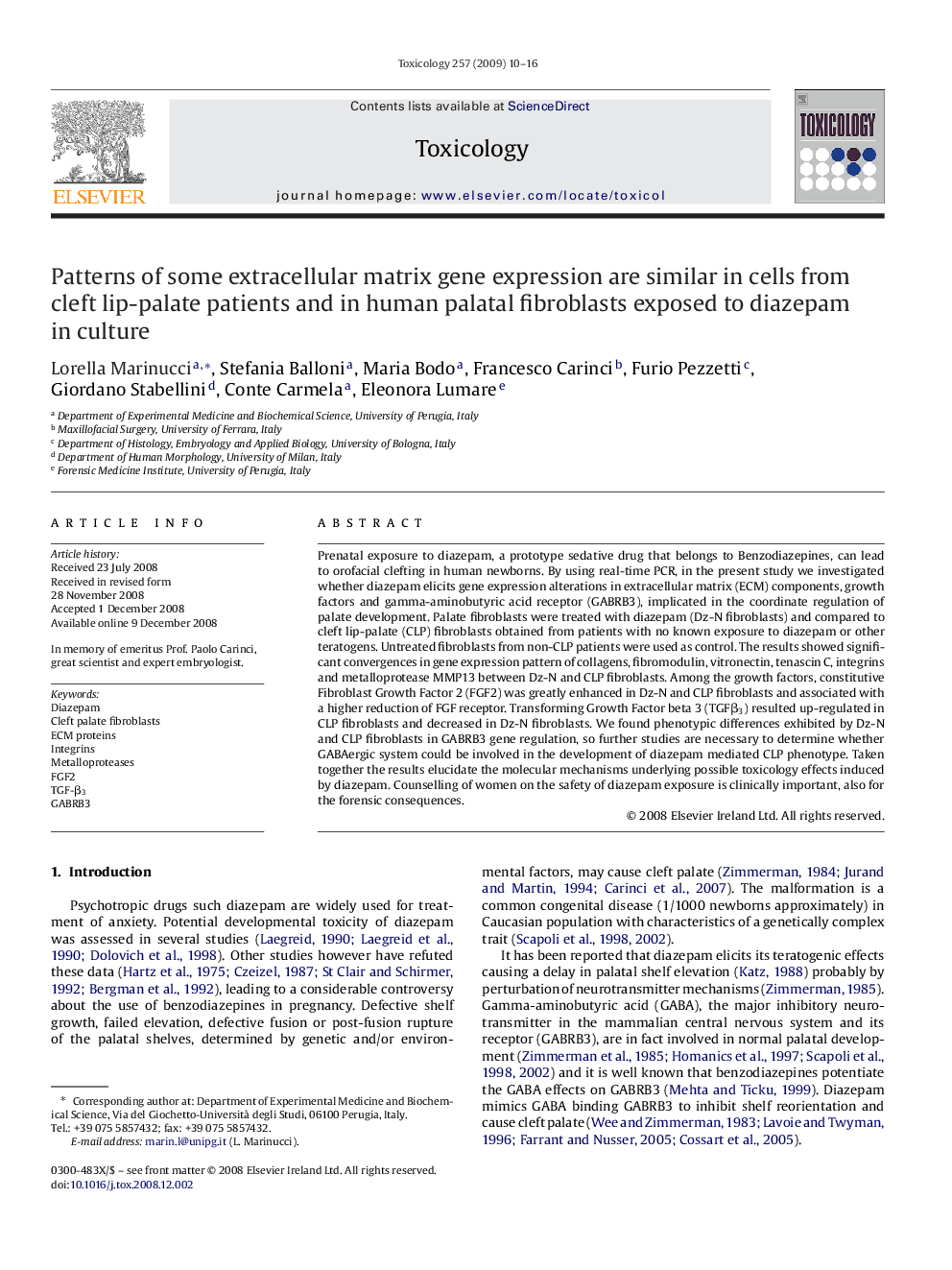| Article ID | Journal | Published Year | Pages | File Type |
|---|---|---|---|---|
| 2596821 | Toxicology | 2009 | 7 Pages |
Prenatal exposure to diazepam, a prototype sedative drug that belongs to Benzodiazepines, can lead to orofacial clefting in human newborns. By using real-time PCR, in the present study we investigated whether diazepam elicits gene expression alterations in extracellular matrix (ECM) components, growth factors and gamma-aminobutyric acid receptor (GABRB3), implicated in the coordinate regulation of palate development. Palate fibroblasts were treated with diazepam (Dz-N fibroblasts) and compared to cleft lip-palate (CLP) fibroblasts obtained from patients with no known exposure to diazepam or other teratogens. Untreated fibroblasts from non-CLP patients were used as control. The results showed significant convergences in gene expression pattern of collagens, fibromodulin, vitronectin, tenascin C, integrins and metalloprotease MMP13 between Dz-N and CLP fibroblasts. Among the growth factors, constitutive Fibroblast Growth Factor 2 (FGF2) was greatly enhanced in Dz-N and CLP fibroblasts and associated with a higher reduction of FGF receptor. Transforming Growth Factor beta 3 (TGFβ3) resulted up-regulated in CLP fibroblasts and decreased in Dz-N fibroblasts. We found phenotypic differences exhibited by Dz-N and CLP fibroblasts in GABRB3 gene regulation, so further studies are necessary to determine whether GABAergic system could be involved in the development of diazepam mediated CLP phenotype. Taken together the results elucidate the molecular mechanisms underlying possible toxicology effects induced by diazepam. Counselling of women on the safety of diazepam exposure is clinically important, also for the forensic consequences.
